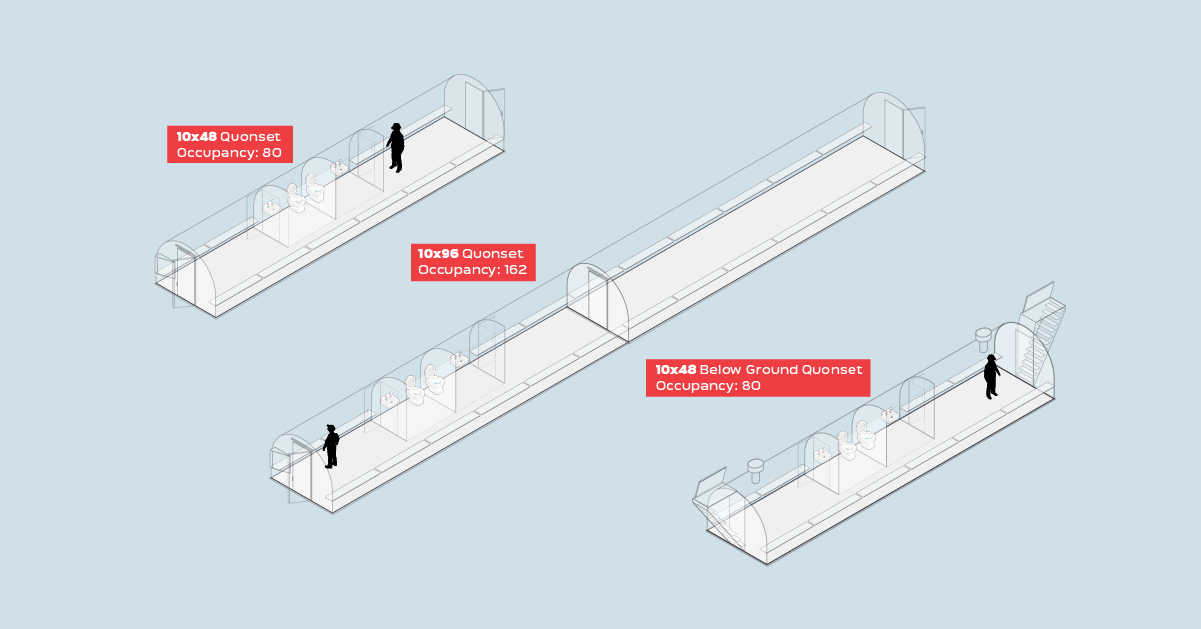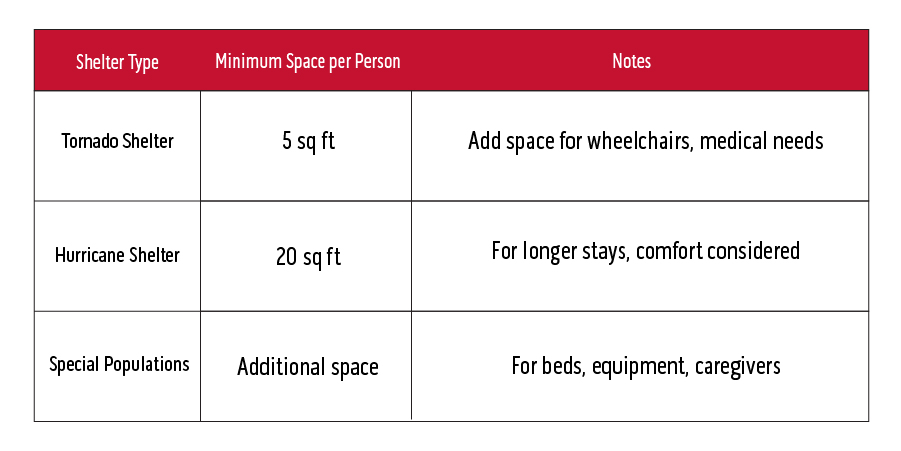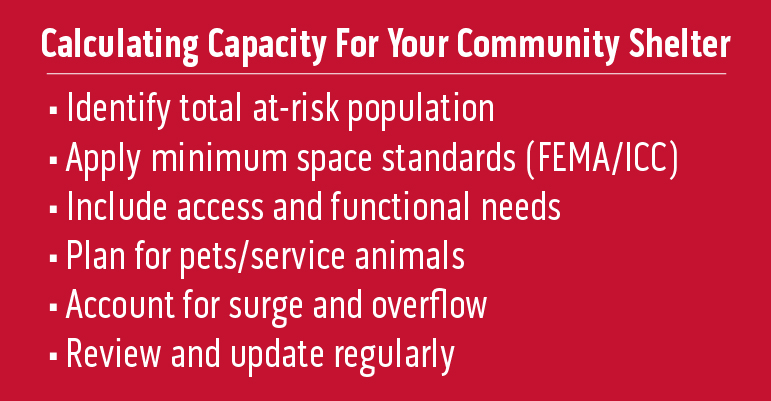CATEGORIES:
Is Your Community Shelter Big Enough? How to Ensure Public Safety
July 15, 2025

Why Community Shelter Sizing Matters More Than You Think
The size of a community shelter can be a matter of life and death during severe weather events. Overcrowded shelters have led to dangerous conditions. During recent tornado outbreaks, some shelters reported turning away dozens of people due to a lack of space, forcing families to seek shelter in cars or unsafe buildings. According to FEMA, the decision to build or expand a community safe room should be based on a thorough risk assessment that considers the size of the at-risk population and the severity of local hazards.Approximately 10,000 lives are saved each year due to shelters and emergency plans. Yet, 36% of Americans do not have emergency plans in the event of dangerous weather.
The Numbers That Save Lives: FEMA & ICC Shelter Capacity Guidelines for Public Safety
FEMA and the International Code Council (ICC) set clear standards for shelter capacity:- FEMA P-361 recommends a minimum of 5 square feet per person for tornado shelters, with increased space for those with access and functional needs.
- ICC-500 codifies these requirements in building codes, ensuring that shelters are designed for both life safety and practical occupancy.
FEMA P-361 & ICC-500 Capacity Standards

Community Demographics: Are You Accounting for Everyone?
Shelter planning must include all members of the community, including older adults, people with disabilities, families with children, and those with medical or functional needs. FEMA and ADA guidelines stress that all shelter residents must have equal access to services, and that space calculations should include extra room for mobility devices, caregivers, and support equipment. Frequently Asked Questions:- Q: Do we need to account for people with disabilities in our shelter capacity? A: Yes. Space and accessible features must be provided for people with mobility, sensory, and cognitive disabilities, as well as for their caregivers and equipment.
- Q: Should we plan for pets or service animals? A: Yes, best practices recommend planning for service animals and, where possible, pets, as many people will not evacuate without them.
- Q: What about people experiencing homelessness? A: Shelters should be low-barrier and accessible to all, including those without permanent housing.
Practical Steps: How to Calculate Community Shelter Sizing for Public Safety
Accurately sizing a shelter involves several key steps:- Assess the total population at risk, including residents, visitors, and special populations.
- Apply FEMA/ICC minimum space standards per person (5 sq. ft. for tornadoes; more for special needs).
- Include extra space for mobility devices, service animals, and caregivers.
- Factor in surge capacity for peak events or population growth.
- Consult local emergency management data and adjust for unique community needs.

Going Beyond Numbers: Accessibility & Comfort Considerations in your Shelter Capacity
Preparedness means more than just fitting everyone inside. Shelters should be accessible, comfortable, and respectful of all residents’ dignity. This means including:- Wheelchair-accessible entrances, bathrooms, and sleeping areas
- Space for medical equipment and caregivers
- Communication aids for people with visual, hearing, or cognitive disabilities
- Quiet areas for people with sensory sensitivities
- Family-friendly and pet-friendly zones
Funding & Expansion: What to Do if Your Community Shelter Falls Short of Public Safety
If your shelter is undersized, several solutions exist:- FEMA Hazard Mitigation Grants: Can fund new construction or expansion if shelters meet FEMA P-361 and ICC-500 standards.
- State and Local Grants: Many states offer funding for shelter upgrades.
- Community Partnerships: Collaborate with schools, churches, or local businesses to share shelter space.
- Phased Upgrades: Expand in stages as funding allows.
- Q: Can we get federal funding for shelter expansion? A: Yes, through FEMA’s Hazard Mitigation Grant Program if you meet design standards.
- Q: What if we can’t build a new shelter all at once? A: Consider phased construction or using multiple smaller shelters.
- Q: Can we partner with other organizations? A: Yes, partnerships with schools, nonprofits, and faith-based groups are encouraged.
Leading with Safety: How Transparent Community Shelter Capacity Planning Builds Public Trust
Transparent, data-driven shelter planning shows the community that leaders are proactive and committed to everyone’s safety. Regularly sharing capacity data, soliciting feedback, and updating plans not only improves preparedness but also builds trust and peace of mind among residents. Communities that plan inclusively and communicate openly are better equipped to weather any storm, literally and figuratively.Is your community shelter sized for everyone who needs it?
Get expert guidance on evaluating or expanding your shelter to meet FEMA standards.
👉 Schedule a free consultation with our shelter specialists
The leading manufacturer and distributor of prefabricated steel above ground and below ground tornado shelters, and community safe rooms.
Privacy Policy | Terms Copyright ©2026 Survive-A-Storm. All rights reserved.




